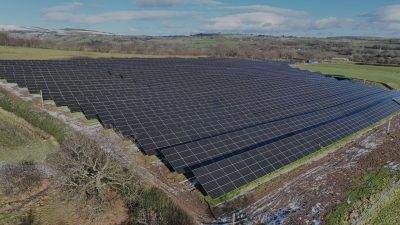What is a solar farm? A solar farm is a large array of photovoltaic solar panels which capture energy from the sun and convert that into usable electricity for consumers and organisations. This energy is distributed through the national grid infrastructure. The panels are placed on ground mount structures in areas with large spaces of land. Other commonly used terms are solar parks or photovoltaic power stations.
Generally, there are a number of types of solar farms;
- Utility-scale: Large solar farms which provide energy directly to the electrical grid to add to their energy mix.
- Community solar farms: These are smaller-scale solar farms that typically generate 1MW-5MW of energy for local residential areas or organisations.
- Factory attached: solar farms which supply a building or business park
- Agrisolar farms: which combine solar generation with crops or animals in one piece of land
How does a solar farm work?
Firstly, the sunlight is captured by the photovoltaic solar panels (PV) which creates an electrical current. This current is passed through an inverter to change direct current (DC) into alternating current (AC).
After this, a transformer increases the voltage to allow it to travel a long distance to the national grid. Finally, the electricity is delivered to the community powering homes, schools, organisations, hospitals, and businesses, etc.
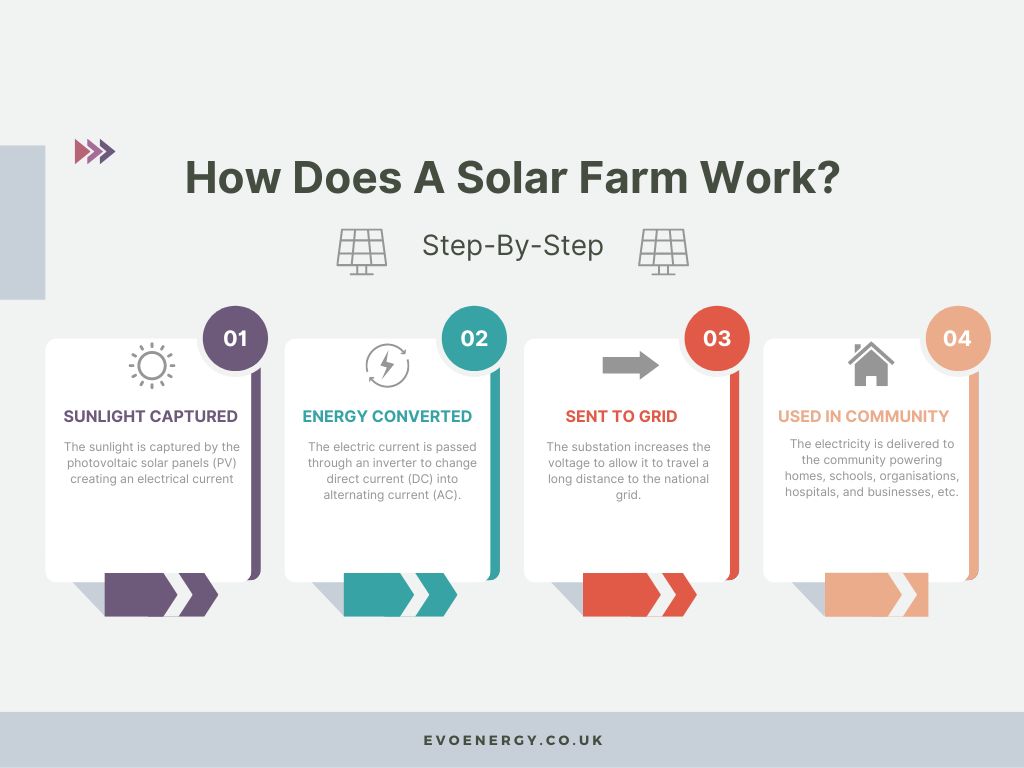
How much does a solar farm cost in the UK?
There are a number of considerations in the price of a solar farm. Linear costs are solar panels, mounting system, inverters, cabling, fencing, etc. There are also fixed costs for example grid connection, access roads, CCTV and security systems. Each site is unique and costs will vary depending on what is required to make the site operational.
How many arces do you need for a solar farm?
Generally speaking, 1 kilowatt (kWp) of solar panels requires an area of 100 square feet. Thereby, most developers will require about 5 acres of land (5 acres) per megawatt (MWp) of power in order to commence construction.
In this example, a 5MWp system can power more than 1,350 homes and organisations based on an annual consumption of 3,600kWh per home.
However, it’s worth noting when estimating size requirements local towns and authorities do not permit full coverage of the entire land and only a proportion of it wiil be taken up with solar PV.
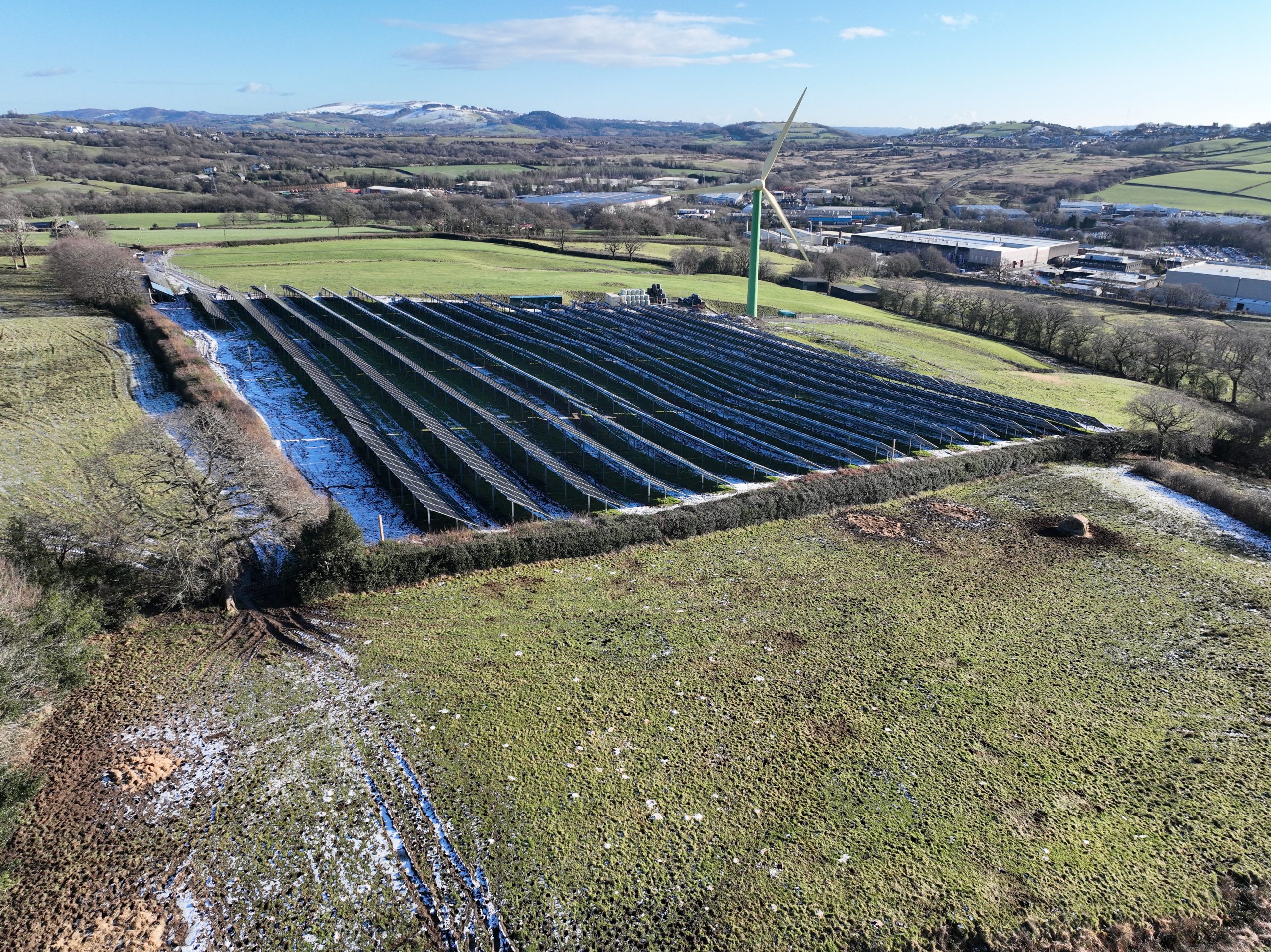
How much energy does a solar farm produce?
The amount of energy that a solar farm can produce depends on its size. Following on from our example previously, a 5MWp system will be expected to generate 3,553MWh (megawatt hours) of solar energy per year and would be anticipated to save 687,264kgCO₂e in 2023, this will decrease as the grid becomes decarbonized with other renewables being deployed in future.
How long does a solar farm last?
There are a number of components to a solar farm, panels, mounting system, inverters transformers as well as civil infrastructure to allow access for maintenance of the solar farm.
The mounting system and cabling, transformers and civil infrastructure will last many years if maintained.
The panels will degrade over time. After 25 years the predicted performance of most modern systems will still be at over 80% production of day one performance.
At this point, there will be a consideration to replace the panels to improve generation. Therefore, it is most likely that the systems, assuming no or limited fault, will stay in place for longer.
The inverters will generally last around 10 years and need replacing when they fail. A good O&M contract will assist in this and a well-maintained system should last for a long time and produce more energy & carbon reductions and require less financial support.
Sometimes it can be economical to re-power the solar array, utilizing the same mounting system and transformer infrastructure, but replacing the solar panels with more efficient models.
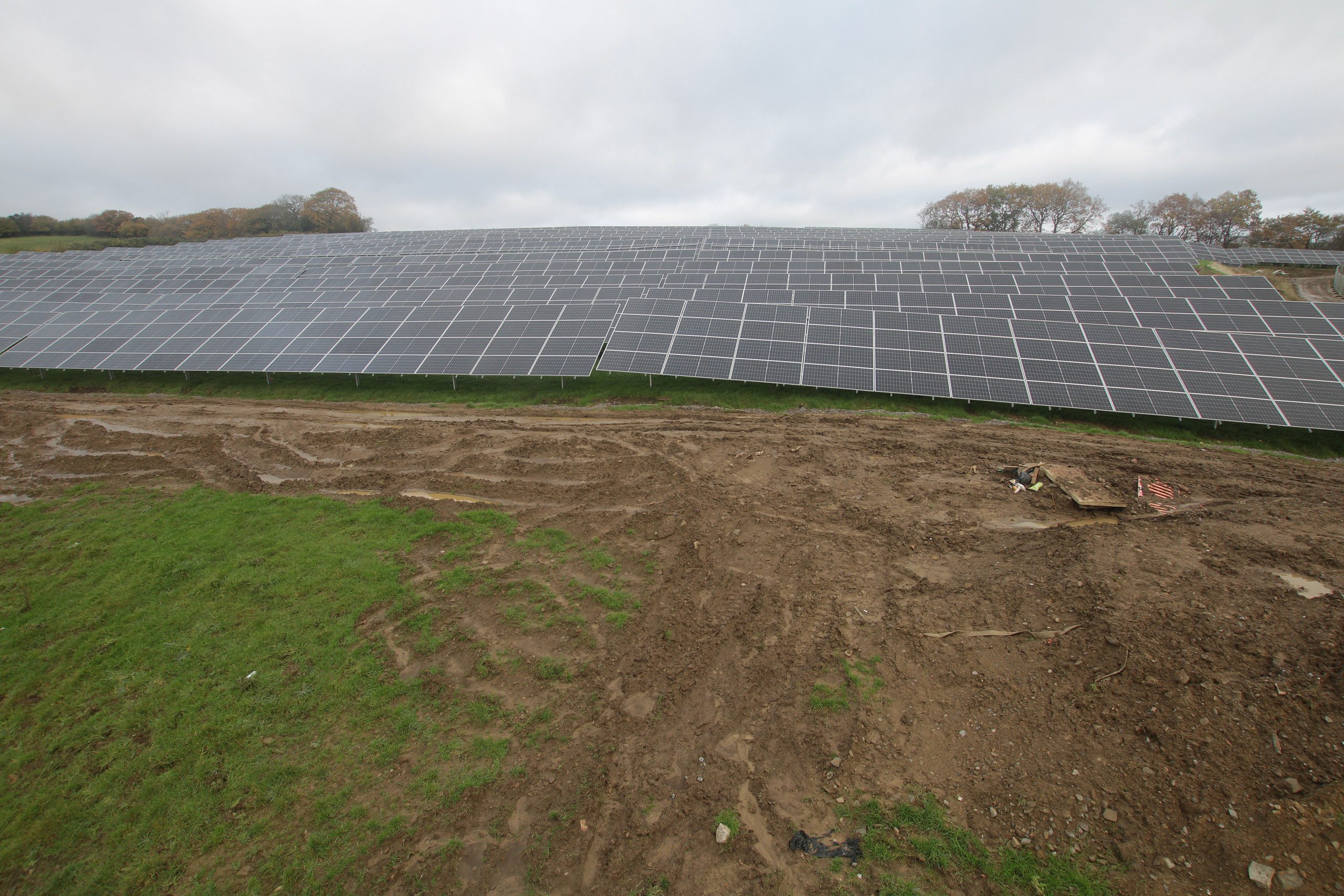
Can Solar Panels Be Recycled?
Solar panels can be taken from one system and re-used on another system providing that they are tested. If they are to be recycled then they have to be collected and shipped to specialist recycling companies in order to achieve the best results.
Ideally, a crystalline silicon panel will be 100% recycled, as the industry matures and technology progresses this is becoming more possible.
From a financial cost perspective whilst there is a cost involved in the purely recycling element there has to be allowance made for the removal of the panels, labour, shipping, etc. At present, there are no recyclers for solar panels in the UK, and so they have to be shipped to Europe meaning that transportation costs are a large part of the total costs.
Therefore, this gives a clear indication that with the growth in the market the opportunity exists to reduce this cost with more localised recycling options in the future.
The costs for decommissioning a ground-mounted system will be approximately 1% of the 25-year derived benefit. As such it can be seen that overall, it is not a major concern but does need to be allowed for out of the final year’s financial returns.
How much money can a solar farm make?
The key incomes from a solar farm are from the energy that the solar farm will generate, which can be sold to an off-taker or energy company. They may offer fixed prices per kWh or agree on a fee that varies depending on the spot price of the energy in the electricity market at that time.
If you have land with a nearby high voltage electrical connection, then it could be possible that a solar farm developer would be interested in renting your land and you would be able to agree a ground rent for the land with them for a fixed number of years.
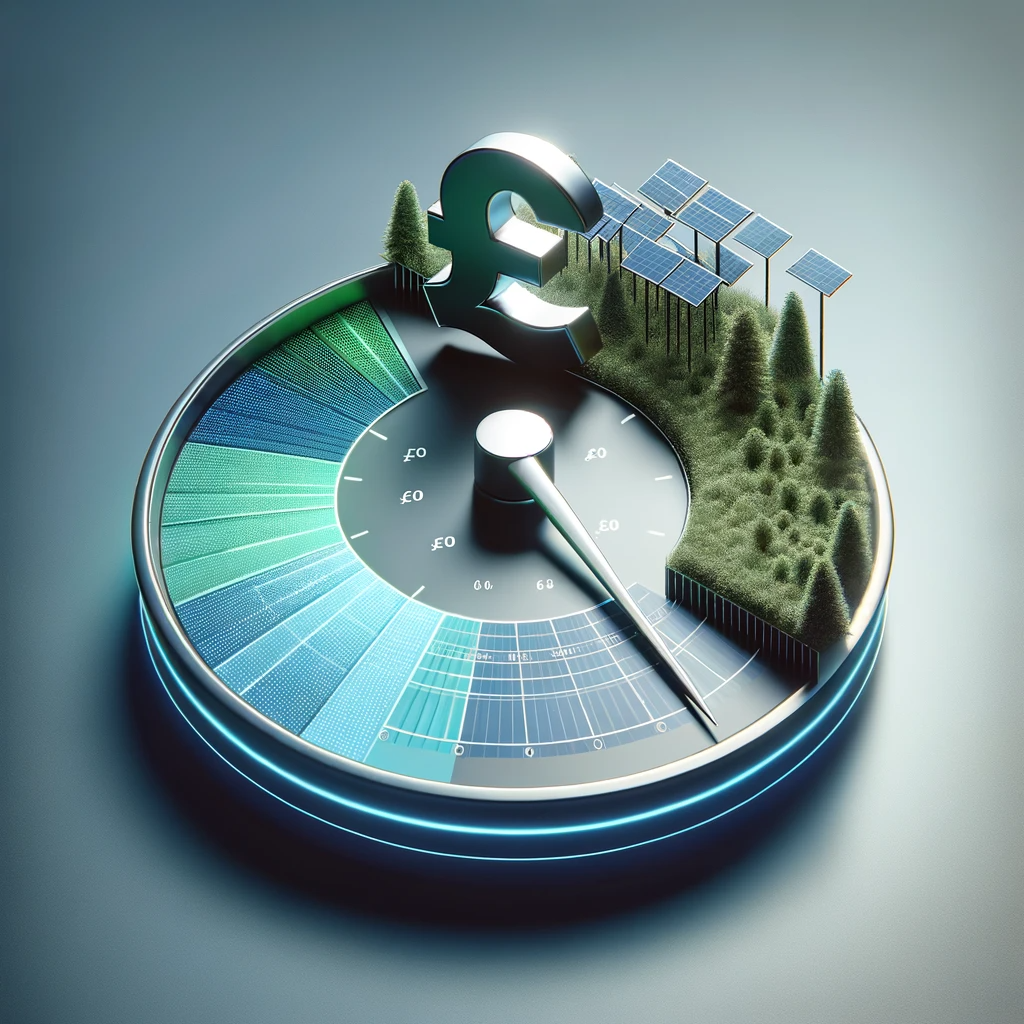
Building solar farms in the UK
Building solar farms is a multiple-step process and usually requires involvement from various parties to utilize their skill sets.
- Cost Analysis: The first step is to complete a complex cost analysis to assess the investment and tax implications behind the project, which can be used to secure funding from investors.
- Assess Viability: The next step is to repeat this for all sites in question in order to assess their validity. Multiple factors are involved in this step to assess where the solar farm should be located such as access, proximity to grid infrastructure, quality of soil, sunlight exposure, land topology is important, proximity to airports and if the land is overlooked by sites of national heritage, these need to be taken into consideration. Negotiations between the property owner and the developer will commence in order to arrive at a reasonable rent and lease agreement.
- Gain permissions. A solar farm will need planning permission and permission to connect to the grid. These permissions can take a while to obtain. Specialist solar companies can guide you in this process and perform these applications for you.
- Construction: Once all parties are in agreement, the construction process can commence. The construction process of the solar farm itself usually takes between 6-12 months.
- Make Connection: The final stage is to connect the system to the national grid. To do this, developers coordinate with the utilities to ensure a full connection and that all metering is in place.
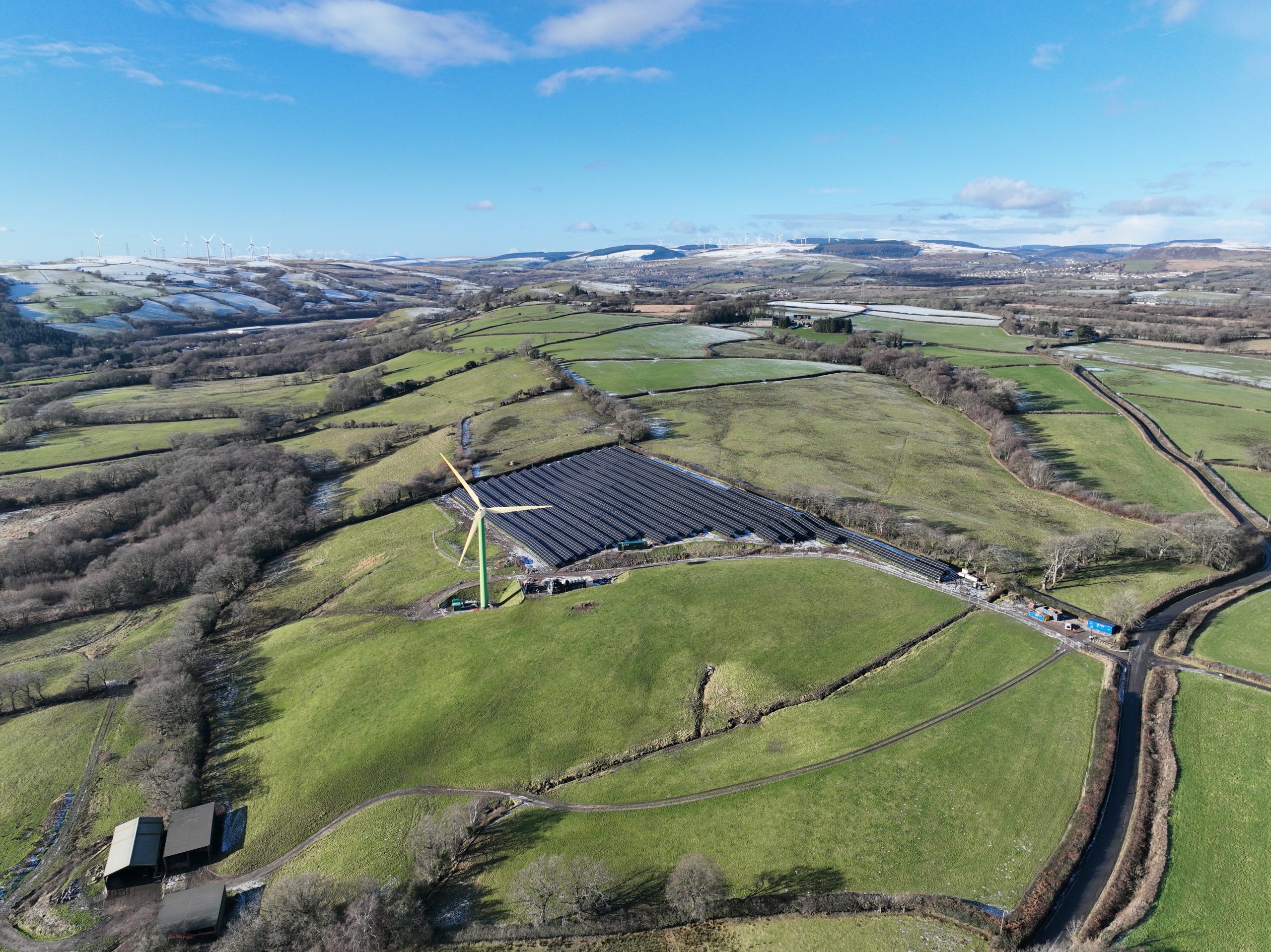
Is my land suitable for a solar farm?
There are many factors that determine whether your land will be suitable for a solar farm such as land area, land quality, proximity to a grid connection, legal rights and orientation to the sun.
- Land Area: As mentioned previously, 1 kilowatt (kWp) of solar panels requires an area of 100 square feet. Thereby, most developers will require about 5 acres of land (5 acres) per megawatt of power in order to commence construction.
- Land Quality: The quality of the terrain and soil will be a huge factor in determining the land’s suitability. Typically, developers look for clear, flat land (5-degree minimal incline) with low risk to flooding. Unless an agrisolar farm is proposed, farmland that is of high quality will generally not be seen as a good location for solar farms and may be contested at the planning stage.
- Proximity to a high voltage Grid Connection: The solar farm’s accessibility to grid infrastructure is a big factor as a large distance from a connection point can increase the cost of interconnection for the developer. If the connection is found on your land then this smooths the connection process. Also, wayleaves will need to be sought from each landowner where a cable is laid so if a cable needs to run across many different owner’s land, this will make the project more complex.
- Legal Rights: The legalities around developing a solar farm are large. For example, any land that is classed as an area of outstanding natural beauty (AONB), or a site of specific interest (SSSI) shouldn’t be considered.
- Level Of Sunlight: Locating the solar farm in areas of the UK where it is sunnier for example in the south will make a large difference to the project’s viability.
How to apply for a solar farm?
There are specialist solar firms who can apply for grid connection on your behalf. Equally, these companies are familiar with planning applications and can conduct the needed studies and surveys for the solar farm to compile the required detailed planning application needed for local or national government permission.
How many solar farms in the uk?
There are over 1000 solar farms operating in the UK all providing clean energy to the grid. Their numbers are increasing rapidly today as more and more investors and businesses are developing new sites.
What Are The Benefits Of A Solar Farm?
| Benefit To… | By… |
| Biodiversity and environment | · Creating and enhancing ecological habitats · Providing increased habitat connectivity through hedgerow planting or infilling · Reducing or eliminating use of pesticides, herbicides and fertilisers · Stopping intensive farming practices leading to lower pollution and · better soil and water quality · Improving soil regeneration and carbon sequestration |
| Local communities | · Building new bridleways and footpaths · Providing educational and recreational opportunities for schools and local community groups · Supporting local conservation priorities e.g. tree planting/orchards, and flood prevention |
| Farmers | · Diversifying revenue opportunities · Opportunities for sheep grazing · Providing pollination services leading to increased yields on and off site |
Source: Solar Energy UK Report
How to invest in solar farms?
There are many ways to invest in solar farms. However, we encourage people to seek out financial advice first before investing in solar farms.
- Company Stock: The simplest way to invest in solar farms is to purchase a stock of a publicly traded company operating within the solar farm industry. Or if you want to reduce your risk then a sustainable ETF would be a good way to spread your investment across a pool of companies.
- Community Solar Farms: There are lots of community-owned companies offering the ability to invest in community-owned solar farms on a pre-assessed area of land. Company ownership and benefits for this can vary depending on the structure of the community-owned company.
- Build Your Own Solar Farm: If you own the land or have a partner with rights to the land then this could be an option. However, this would require large amount of capital and extensive research to pull together specialist companies and contractors to achieve this.
- Lease The Land: If your land is big enough, an alternative option could be to lease your land out to a solar developer. Given the recent boom in demand for renewable energy, there are plenty of interested parties looking to invest in solar farms.
Do solar farms damage the soil?
Solar farms are ground-mounted solutions built on steel frames that are placed into the ground. Generally, these frames are piled into the ground causing minimal disruption to a large part of the solar farm area. When the solar farm is decommissioned, these piles can be removed, leaving little trace of their location. As solar farms a low intensive land use with minimal pesticides or maintenance required, they can help the soil to recover, boosting biodiversity and soil health.

Source: Solar Energy UK
Can animals graze near solar farms?
Most animals are safe to graze around the solar panel arrays, however, it’s recommended that only certain animals are allowed near the area as larger animals such as cattle or goats can risk injury if they chew through the wires or jump on top of the panels.
That’s why it’s best to only allow smaller animals with calmer natures such as sheep and chickens to be around the system. The mounting frames can be adjusted to allow for larger animals to graze underneath the panels and cabling can be installed with these animals in mind, for example protecting the cables in ducting.
Do solar farms affect property values?
It can be a common opinion that renewable energy projects reduce the value of properties in the area. Research has shown that house prices within 2km to tall wind turbines and solar farms fell by 5.4% and 2.6% respectively from 1985 through to 2019.
However, this varies depending on the type of house as detached houses saw no impact. Furthermore, further analysis of the study found that other factors were much more significant in determining decreases in house prices.
Are solar farms dangerous to live near?
The electricity from the solar farm and transmission to the power grid emits extremely weak electromagnetic fields. The World Health Organisation (WHO) notes that there is no evidence that these are harmful to human health in any way, meaning that it is completely safe to live within close proximity to a solar farm.
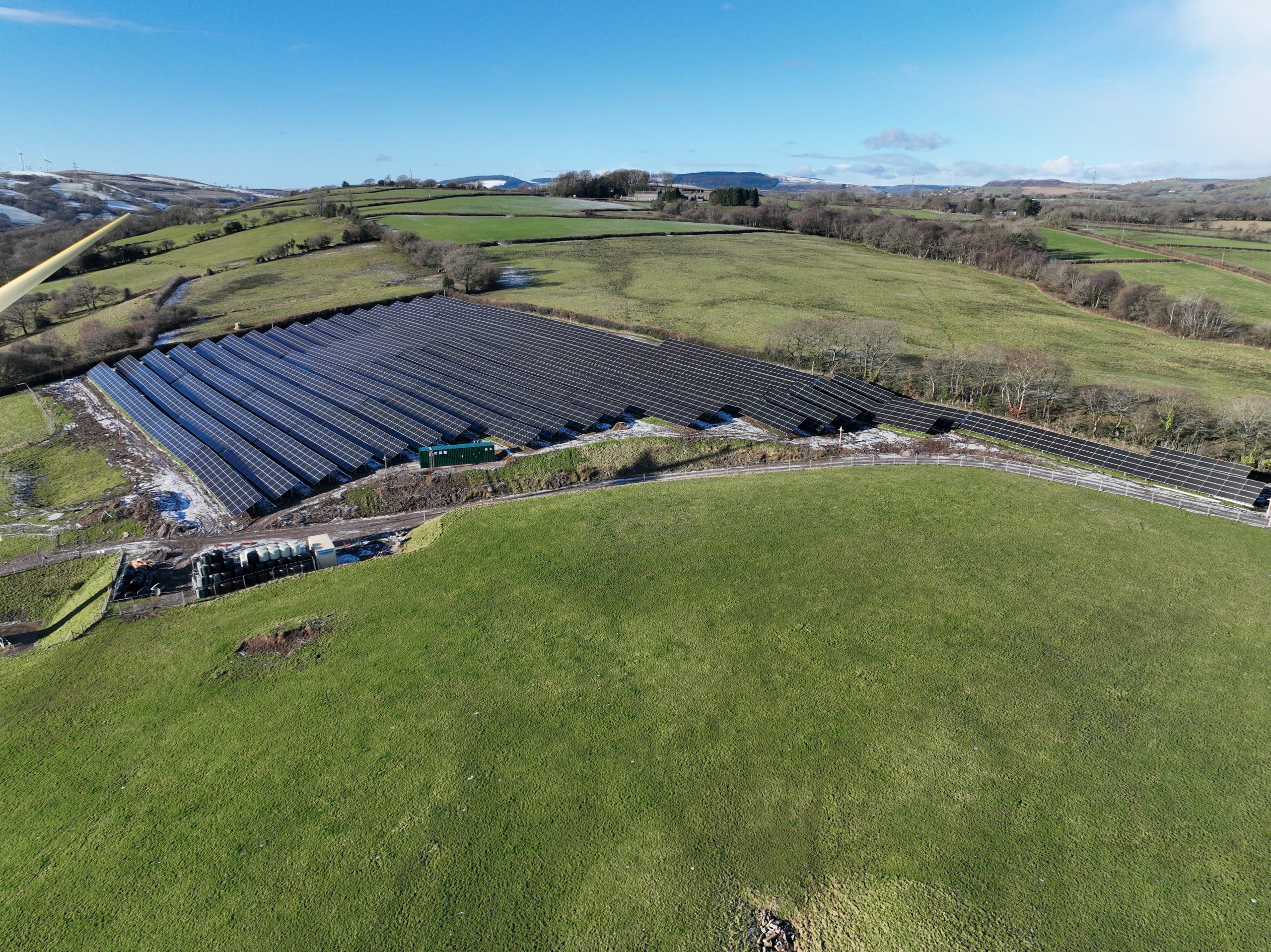
How much land do solar farms take up?
In the UK, new solar farms occupy roughly four acres of land per MWp of installed capacity. All solar farms in the UK currently account for 0.08% of total land use.
To meet the government’s net zero target, the Climate Change Committee estimates that we will need between 75-90GW of solar by 2050. Our analysis indicates this would mean solar farms would at most account for approximately 0.4-0.6% of UK land – less than the amount currently used for golf courses.
How Can We Help?
As one of the UK’s market leaders in renewable energy solutions, we are in the best position to help your business realise the potential of solar PV.
Ultimately, it is down to us all to make changes towards sustainability in order to create a greener future. Now is a good time to assess your net-zero aspirations and talk to us about how we can help achieve them.
Our team of renewable energy experts are available to provide Net Zero consultancy and renewable (Solar, EV, battery) proposals alongside installation operations and maintenance support to asset owners.
Find our more about renewable energy technology today.
